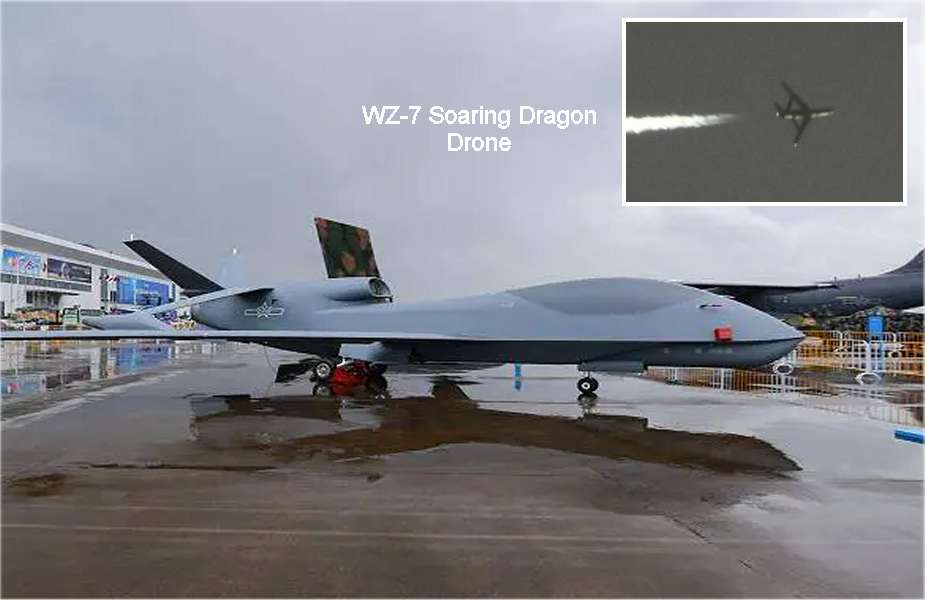On April 18, 2024, the People's Liberation Army's WZ-7 Soaring Dragon drone was spotted for the first time flying over the South China Sea near the Philippines. The high-altitude, long-range drone was observed by Raffy Tima, a reporter for GMA News while covering a project supporting local fishing communities in the area.
Follow Army Recognition on Google News at this link

China -made WZ-7 Soar Dragon High-Altitude Reconnaissance Drone (Picture source: Xianglong Livejournal and Raffy Tima)
This sighting occurs amid heightened tensions, highlighted by the initial deployment of the U.S. Army's Typhon missile system on the Philippine island of Luzon earlier this month. This system is capable of launching Tomahawk cruise missiles and SM-6 multipurpose missiles, targeting land and maritime threats up to nearly 1,600 kilometers away.
Known as the "Soaring Dragon," the WZ-7 drone is recognized for its surveillance and reconnaissance capabilities. It typically operates from Shuangliao Air Base in northeastern China and has been active not only in the South China Sea but also around the Taiwan Strait and along the Japanese coastlines. The WZ-7 recently completed a notable flight over the Sea of Japan, potentially crossing Russian or North Korean airspace.
The WZ-7's presence over these contested waters coincides with a period of intensifying friction between China and the Philippines over the Scarborough Shoal. Increasingly assertive actions by the Chinese Coast Guard and Maritime Militia in this crucial area might indicate a strategy of enhanced surveillance by Beijing, which continues to claim a large portion of the South China Sea despite international disputes.
The stakes of this increased surveillance could be to support Chinese territorial claims while monitoring foreign military developments, notably the installation of the Typhon system which marks a significant shift in American military presence in the region. The implications of these deployments and surveillance for regional stability remain to be seen as tensions continue to rise over these strategically vital waters.
The WZ-7 HALE drone was unveiled to the public during the 2021 Zhuhai Airshow. Designed by the Chengdu Aircraft Industry Group and built by the Guizhou Aircraft Industry Corporation, it features a unique tandem wing configuration, with one wing in the middle of the fuselage and another at the rear. This design offers a more rigid, less flexible wing than other configurations, purportedly providing an increased lift-to-drag ratio and simpler flight controls than a conventional HALE UAV.
The Chinese armed forces will use the WZ-7 for reconnaissance missions, but according to Chinese military sources, it could be outfitted with sensors suitable for marking naval vessels for targeting by anti-ship ballistic missiles and cruise missiles. The drone can provide data to ballistic missile launcher units such as the DF-21D. Additionally, it is equipped with advanced battlefield communication and electronic jamming equipment, allowing it to serve as a high-altitude communication relay and to deploy electronic jamming equipment near opponent fleets.
The WZ-7 is powered by a Guizhou WP-13 turbojet engine located at the rear of the drone, with the air intake positioned on the upper part of the fuselage. The drone can reach a cruise speed of 750 km/h, with a maximum range of 7,000 km. It measures 14.33 meters in length, with a wingspan of 24.86 meters and a height of 5.41 meters. The WZ-7 has a flight endurance of 10 hours and a payload capacity of 650 kg.
















